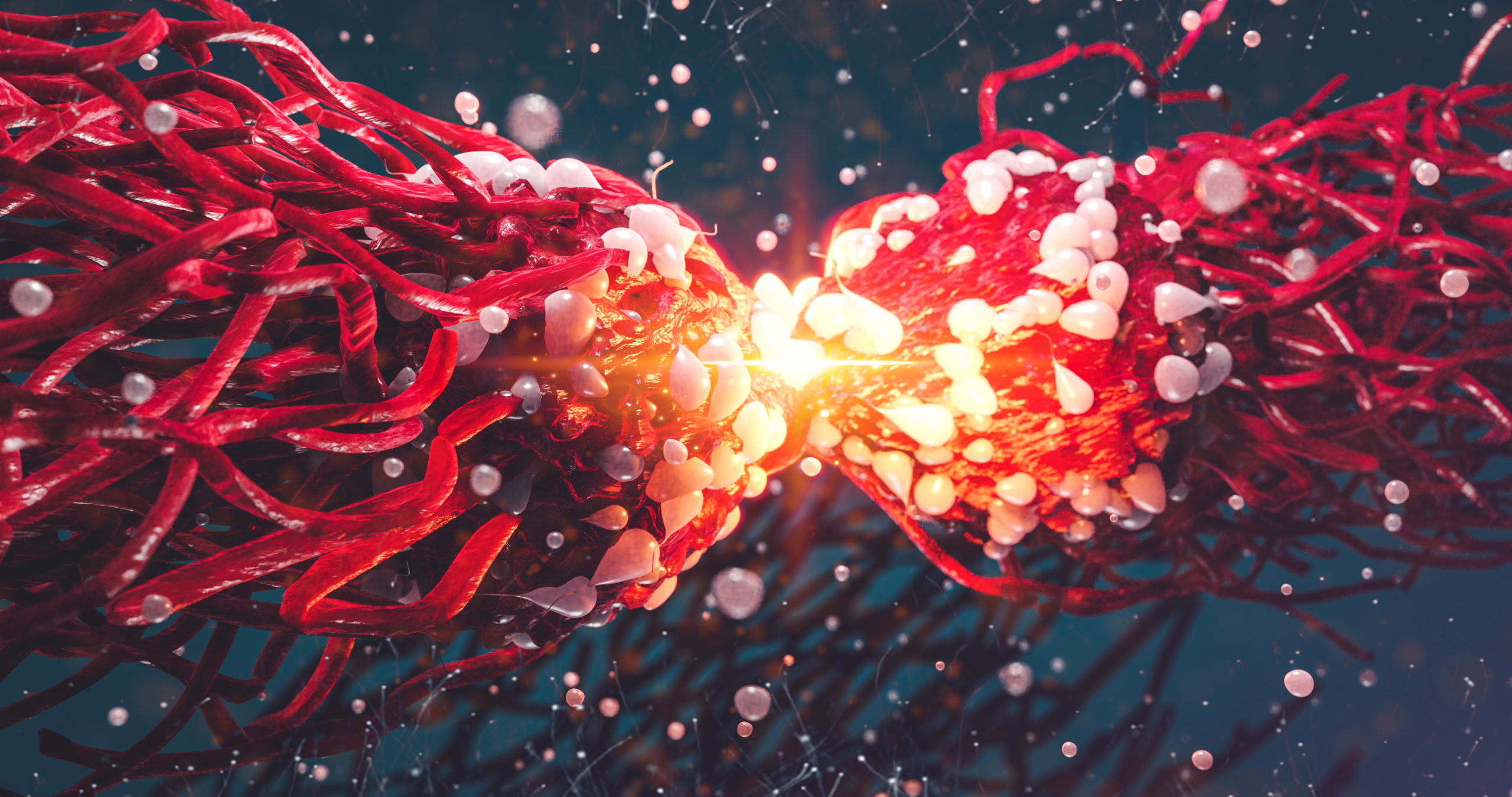The word “chromotripsy” literally means “chromosome breaking”. Chromosomes that undergo chromotripsy first fragment into several pieces and then are sewn back in a random order by DNA repair processes, probably by joining non-homologous ends. Now researchers at the University of California (UC), the San Diego School of Medicine and the University of California San Diego branch of the Ludwig Institute for Cancer Research, with colleagues in New York and the United Kingdom, describe how this phenomenon ends by promoting cancerous cell growth.
Their findings, “Chromotripsy drives the evolution of gene amplification in cancer,” were published in the journal Nature.
Chromotripsy is a mutational process whereby even thousands of grouped chromosomal rearrangements occur in a single event in genomic regions located and confined to one or a few chromosomes, and are known to be involved in both cancer and congenital diseases.
“These rearrangements can occur in a single step,” explained Ofer Shoshani, PhD, a postdoctoral fellow in Don Cleveland’s laboratory, PhD, professor of medicine, neuroscience and cellular and molecular medicine at UC San Diego School of Medicine.
“During chromotripsy, a chromosome in a cell is broken into many pieces, hundreds in some cases, followed by reassembly in a scrambled order. Some pieces are lost while others persist as extra-chromosomal DNA (ecDNA). Some of these elements of ecDNA promote the growth of cancer cells and form one-minute chromosomes, called ‘double minutes’. “
Previous research by the team found that up to half of all cancer cells in many types of cancer contain ecDNA carrying cancer-promoting genes. In the current study, the researchers used direct visualization of the chromosome structure to identify the stages of gene amplification and the mechanism underlying methotrexate resistance.
The team sequenced entire genomes of cells that develop resistance to drugs, revealing that chromosome fragmentation stimulates the formation of genes carrying ecDNA that provide resistance to anticancer therapy. The researchers also looked at how chromotripsy leads to the formation of ecDNA after amplification of the gene within a chromosome.
The researchers’ findings demonstrate chromotripsy as the main factor that accelerates the rearrangement of genomic DNA and amplification in ecDNA and allows the rapid acquisition of tolerance to altered growth conditions.
“Chromotripsy converts intra-chromosomal (internal) amplifications into extra-chromosomal (external) amplifications and this amplified ecDNA can then reintegrate into chromosomal sites in response to DNA damage from chemotherapy or radiation,” said Shoshani. “The new work highlights the role of chromotripsy in all critical stages of the life cycle of amplified DNA in cancer cells, explaining how cancer cells can become more aggressive or resistant to drugs.”
“Our identifications of repetitive DNA fragmentation as a driver of anti-cancer drug resistance and the DNA repair pathways required to reassemble the broken chromosomal pieces have made it possible to rationally design drug therapy combinations to prevent the development of drug resistance in patients with cancer, thereby improving your results, ”noted Cleveland.
